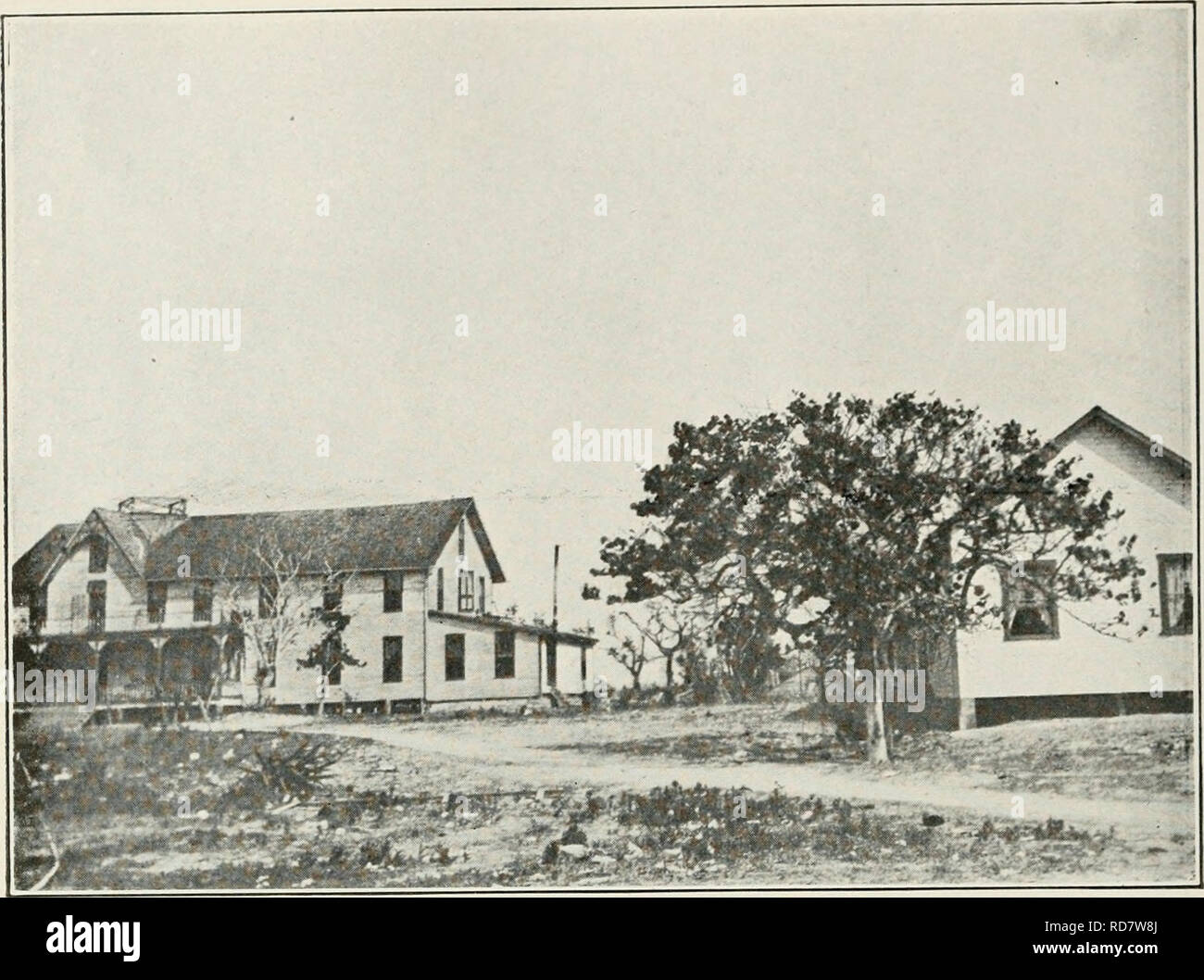. The Cuba review. Cuba -- Periodicals. Hi THE C U B A R E V I E W. A Sea Grape Tree, Growing at Marco, West Coast of Florida. The names listed indicate clearly that the tree is largely confined in its range of growth to the seacoast. The name mangrove grape infers that the tree grows among the mangrove trees, which do not thrive beyond the limits of high tide. In fact, next to the mangrove it is said to he the commonest tree on the shores of Cuba, as well as in other parts of the West Indies. The sea grape is very common in southern Florida from Cape Canavoral southward. It is found on all of

Image details
Contributor:
The Book Worm / Alamy Stock PhotoImage ID:
RD7W8JFile size:
7.2 MB (376.7 KB Compressed download)Releases:
Model - no | Property - noDo I need a release?Dimensions:
1832 x 1365 px | 31 x 23.1 cm | 12.2 x 9.1 inches | 150dpiMore information:
This image is a public domain image, which means either that copyright has expired in the image or the copyright holder has waived their copyright. Alamy charges you a fee for access to the high resolution copy of the image.
This image could have imperfections as it’s either historical or reportage.
. The Cuba review. Cuba -- Periodicals. Hi THE C U B A R E V I E W. A Sea Grape Tree, Growing at Marco, West Coast of Florida. The names listed indicate clearly that the tree is largely confined in its range of growth to the seacoast. The name mangrove grape infers that the tree grows among the mangrove trees, which do not thrive beyond the limits of high tide. In fact, next to the mangrove it is said to he the commonest tree on the shores of Cuba, as well as in other parts of the West Indies. The sea grape is very common in southern Florida from Cape Canavoral southward. It is found on all of the West Indian Islands and on the tropical parts of the Spanish Main. The tree is not wholly confined to seashore, but in Cuba and Jamaica, where it finds its best development, it grows in the moist woods of the interior at elevations of 500 feet or more. Very little is known in reference to the distribution of the sea grape in South America. The shores of the Caribbean Sea afford the most congenial condi- tions for the growth. In a range so large and including situations so various, it is natural that the tree should vary greatly in size. Generally speaking, the sea grape is only a low shrub in many parts of the west coast of Florida. It rarely grows to be more than twenty feet in height and one foot in diameter. In poor seaside sand the trees remain small and bushy, while in good soil and protected from the strong ocean winds they often attain a height of from 25 to CO feet and from IS to 24 inches or more in diameter. There is perhaps no tree in the tropics better distinguished from others, even by those who possess but little knowledge on the subject, than the sea grape. The young branches are smooth and gray, but the older ones and the trunks have a rough bark full of fissures. The leaves are remarkable for their large size; they are nearly round with a narrow cleft at the base, where they are attached to very short-leaf stalks, which single it out from most other trees.